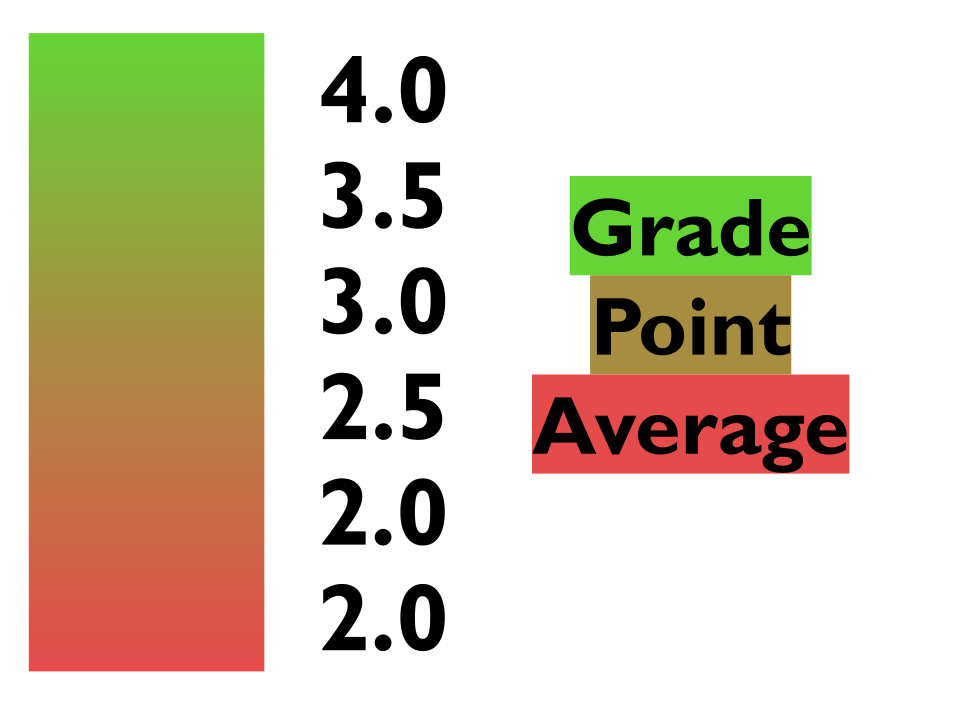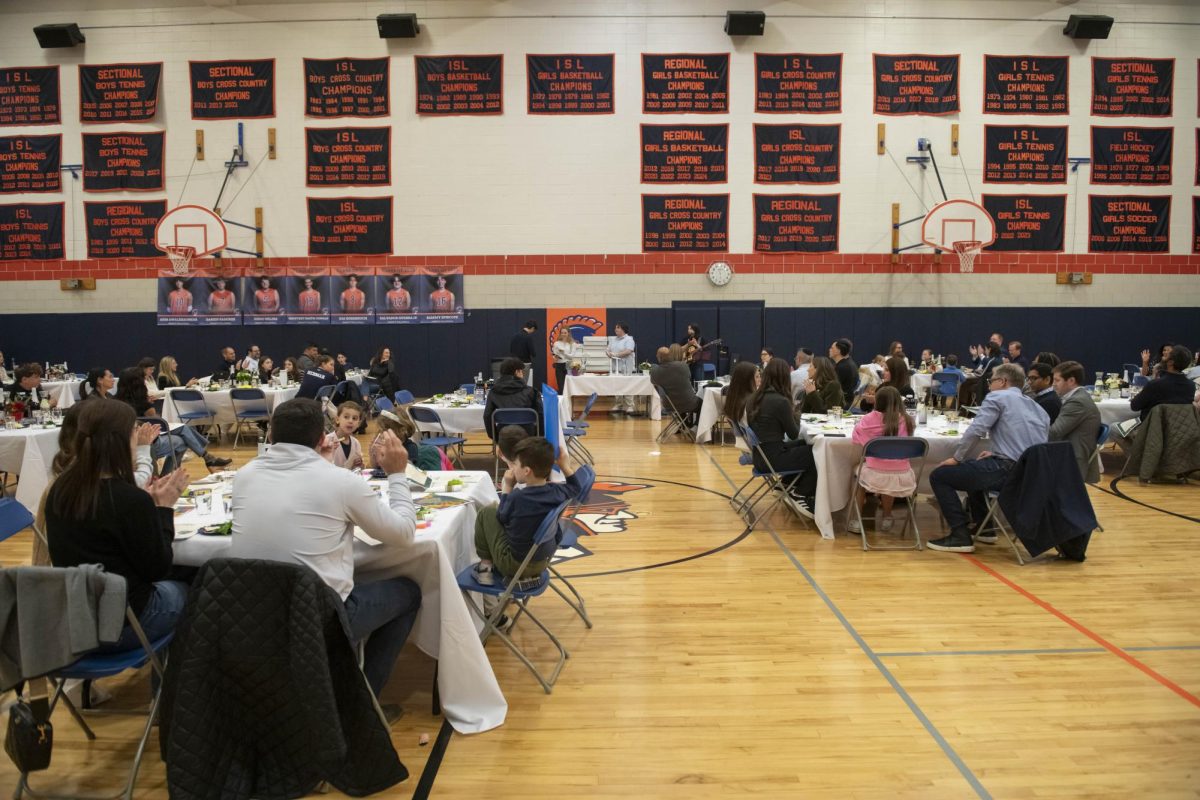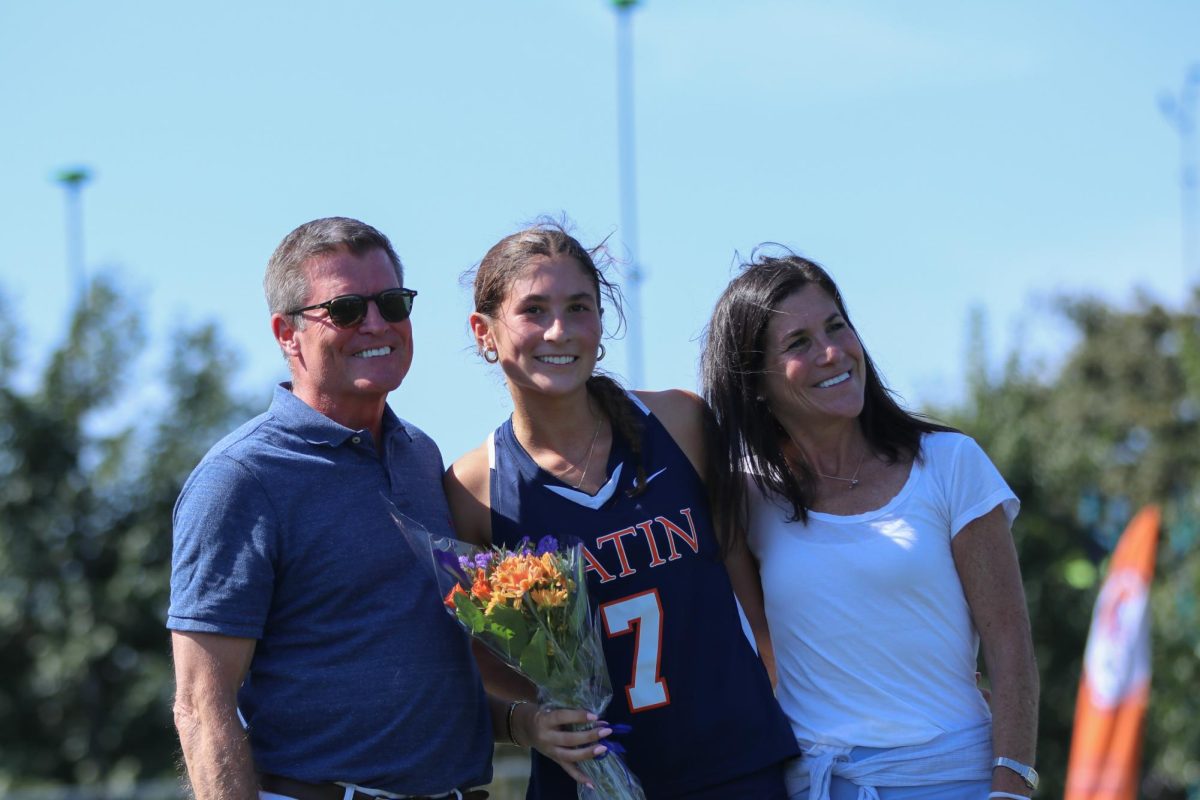Long Lunch Lines Infuriate Students
While Upper School students and faculty enjoy a wide variety of food options during lunch, choosing to eat in the cafeteria comes with a sacrifice: time. After a little less than two months of fully in-person learning, students are fed up with the incredibly long lines, which often stretch well outside the cafeteria.
Latin’s cafeteria has three main food stations: an action station, a sandwich bar, and a “chef’s special” dish. Some students said they cannot attend multiple stations in one lunch period due to the current state of the lines. “If I tried to get all of the food I wanted during lunch, I know I would run out of time to eat,” senior Will Benford said. “Even if I pick one dish I want, I know it’s going to be a 15 to 20-minute line.”
Senior Remy Rigby agreed. “With the current lunch lines, 35-minute lunch periods don’t work because you’re scarfing down your food and trying to make it to your next class on time,” she said.
Acknowledgment of the absurdly long lunch lines extends beyond the student body. “I do think [lunch lines] have been an issue pretty much the whole time I’ve been at Latin,” said 11th and 12th Grade Dean of Students Joe Edwards. Joining Latin in 2017, Mr. Edwards noted that the daily bum-rush of students to the cafeteria has always been problematic.
Most Latin students and staff members experience the emotionally draining and chaotic process of trying to get lunch during rush hour. While most agree that the lunch lines are a problem, not everyone agrees on the solution.
“I don’t think it makes any sense that we have someone swipe our ID cards when we enter the lunch room,” Will said. “Swiping a card is an automated task. When you enter the school, you don’t go up to Sami and have him swipe your ID. We’re working with a 1900’s system in our cafeteria.”
HandCut Foods requires staff members to swipe each person’s Latin ID card before allowing them access to the cafeteria. “The swiping of ID cards is meant to ensure students, faculty, and staff receive their allotted daily access to the cafeteria,” Andrew Morgan, VP of Business Development at HandCut Foods, said. “This data tracking is also important to gauge the daily volume of meals for purchasing and food preparation,” he added.
According to Mr. Morgan, simplifying this process may be impossible at the moment. “We are exploring ways to automate this swipe system. Unfortunately, the global supply chain crisis along with the microprocessor shortage means that procurement of the proprietary hardware is extremely delayed.”
Although Mr. Edwards acknowledged the problem, he remained focused on how this year is extremely different compared to most. “Some patience is okay,” he said.
Mr. Edwards also noted that, in a normal year, only one grade learns how to navigate the cafeteria at a time, but this year, there are essentially four grades figuring out how to get lunch efficiently after not having been in the building for the past year and a half.
Mr. Edwards also encouraged students to check out an alternative option on the first floor, saying, “The first floor kiosk is a really under-used option.” If more students eat downstairs, some of the stress placed on the main cafeteria during lunch hours will alleviate.”
There isn’t one glaringly obvious problem with the lunch process, and there definitely isn’t a clear solution. Will said, “I just feel like there’s a better way to do this than what we’re doing right now.”





















































